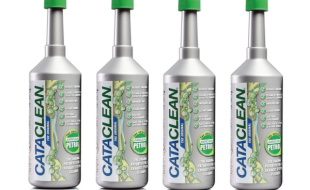Table Of Contents
Building A Resilient Compliance Program In 2025: Tools, Culture, And The Operational Backbone Behind Trust
Come on—compliance program used to be something you simply checked off a list. File the policy, obtain the signature, perhaps dust it off for the yearly audit.
No more. These days, compliance is not merely about staying out of regulatory trouble—it’s about demonstrating your company possesses a backbone.
If you’re in finance, you’re navigating risk frameworks that shift as quickly as the markets. In healthcare, you’re sitting on mountains of sensitive data regulators—and patients—won’t let slide.
If you’re a global company, you’ve got multiple watchdogs breathing down your neck at once, each with their own expectations.
The message is clear: Compliance is squarely at the intersection of trust and reputation these days. It’s not documentation. It’s staying alive.
And truly, in 2025, policies withering away in a forgotten folder will not suffice. You require systems that scale with you, processes that evolve, and a culture that cares for real—yes, even when nobody’s looking.
Start With The Right Foundations
No company spins up a compliance program overnight. You’ve got to start with a map—your risks lined up against the rules you’re supposed to follow.
That could be privacy laws like GDPR in Europe or CCPA in California, industry-specific frameworks like APRA CPS 230 in Australia, or even global governance standards like ISO 37001 for anti-bribery or SOC 2 for data security.
The underpinning of a good compliance program isn’t rocket science, but it does need to be done with rigor:
1. A live risk review process, not one-and-done
Risks evolve with markets, products, and even the daily news cycle. A stagnant assessment is as valuable as yesterday’s password.
2. Well-defined owners, so if something blows up, you have people assigned to it
Too often, responsibility is loose, and when a violation occurs, fingers point everywhere but nowhere. Clear accountability doesn’t leave room for interpretation.
3. Docs that people actually use, not just file away for “audit season
If employees don’t touch policies except when an auditor arrives, they’re useless. Living documents need to inform day-to-day decision-making.
Too many compliance guides remain doorstops. The companies that succeed? They integrate compliance frameworks into day-to-day life, not quarterly fire drills.
Technology Should Do The Heavy Lifting
By this point, it’s clear: large organizations are relying on tech. According to Gartner, over 80% of companies will deploy compliance management software by 2025.
The pain isn’t getting tools, though—it’s determining which ones won’t buckle under the weight of your organization’s complexity.
New-age compliance platforms can:
- Detect suspicious employee messages in real-time (consider insider trading, harassment, or leaks)
- Automatically alert when cash or information begins flowing in unusual patterns
- Centralize documents so audits don’t feel like a treasure hunt
- Run nonstop control tests to keep you from being blindsided
For the dirty work—piles of emails, logs, PDFs, and spreadsheets—products such as Nuix software. They enable businesses to quickly index and search electronic disorder, essential for investigations, audits, and litigation.
It is already being utilized by legal teams, insurers, and banks to automate an equivalent of hours of tedious manual review with defensible workflows.
The future of compliance program tech is also AI-assisted monitoring. Imagine a system that not only flags suspicious activity but also suggests mitigation steps, or one that learns from past incidents to refine controls automatically. That’s where we’re heading.
Processes That Keep Up With Change
Policies are wonderful… until they’re stale. Rigid rules become dead weight. An effective compliance program must breathe. It must have feedback loops. It must adapt as your business and regulatory landscape evolve.
Which means revising when:
- A regulator makes a tweak (e.g., SEC climate disclosures, EU AI Act)
- You acquire a company, enter new markets, or introduce a new product
- A whistleblower blows the lid off something
- An audit reveals holes you didn’t want to find
The best firms don’t simply respond—they institutionalize change. Post-mortems, periodic risk assessment, and consultant input all roll back into the compliance architecture.
Bonus points if changes connect to board reporting or executive scorecards. Where compliance is integral to leadership responsibility, it’s no longer a choice.
Culture Is What Happens When No One’s Watching
Audits are one thing. But the ultimate test? What happens on a random Tuesday when the rules aren’t crystal clear. Do employees speak up? Or do they remain silent because they’re afraid of retaliation?
That’s why culture is more important than binders of rules. A compliance program culture looks like this:
- Executives leading by example, not just preaching
- Training that isn’t a boring box-check (interactive case studies beat PowerPoints)
- Middle managers supporting individuals when they speak up
- Turning mistakes into learning, not just punishing
When organizations get culture right, they detect issues earlier, minimize drama, and sidestep expensive blowback. Compliance is no longer a side hustle and is instead simply ”how we do things here.”
Bridging The Gap Between Legal, Risk, And Operations
Here’s a typical mess: legal dictates policies, risk establishes controls, operations executes the teams… and when things break? Fingers everywhere, nowhere to point.
The remedy? Shatter the silos.
Increasingly, organizations are turning towards:
- Compliance systems shared by legal, risk, and ops
- Steering committees with cross-functional members
- Compliance reporting centralized directly to the C-suite
The objective is straightforward: everyone has the same view of the picture and operates from the same playbook. When accountability is in the hot seat, silos are not only inefficient—they’re hazardous.
Looking Ahead: Trust As A Strategic Asset
Regulators are tightening up. Stakeholders are more vocal. Employees, customers, and investors are paying attention.
The companies that succeed won’t merely “stay compliant.” They’ll use compliance as a competitive asset.
That means:
- Purchasing systems that adapt, rather than merely stocking shelves with forms
- Integrating compliance into normal workflows, rather than adding it as an afterthought
- Developing a culture where doing the right thing is instinctual, rather than obligatory
Because let’s face facts—trust isn’t gained by signing documents. It’s created by the hundreds of tiny decisions your people make daily.
Compliance program in 2025 is no longer about survival. It’s about gaining trust, shielding reputation, and making integrity a source of long-term strength.
The firms who get this will not just pass audits. They’ll thrive in an age where compliance is credibility.
Read More:














